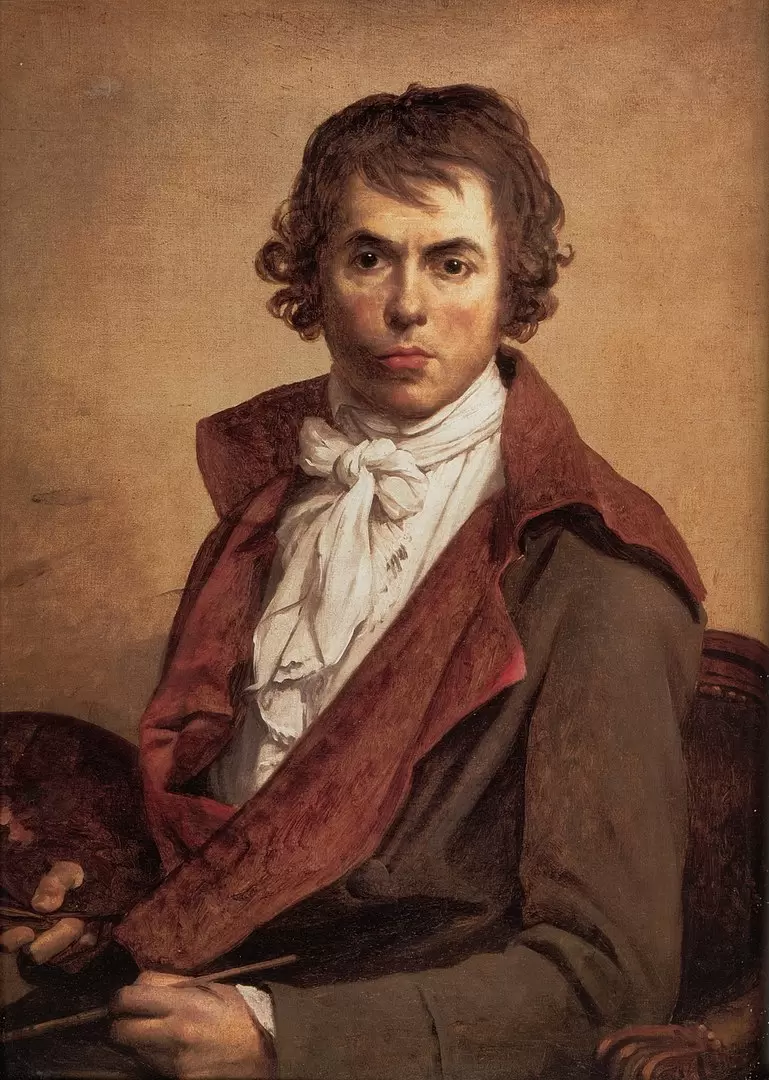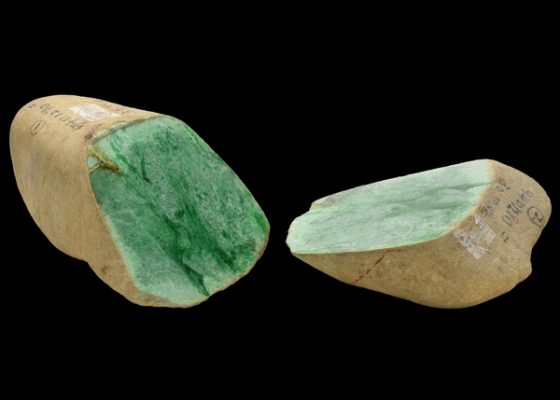
By Bethany Shepard
Throughout the course of French history, notably throughout the 18th and 19th centuries, art styles altered significantly. This sudden and extreme change happened as a result of a shift in artists’ philosophies and preferences.
Within a century, the artistic style evolved from the Portrait of Madame Récamier (1800) by Jacques-Louis David to Luxe, Calme et Volupté (1904) by Henri Matisse.
The rate of artistic advancement was astonishing compared to other centuries in which the creative styles and philosophies remained for longer periods of time. The Renaissance, for example, lasted around 200 years, followed by the Baroque period, which lasted approximately 100 years. However, by the 19th century, artistic styles altered every few decades.
In France, Jacques-Louis David established Neoclassicism, which lasted over 40 years. Romanticism, which lasted around 25 years, succeeded Neoclassicism. Naturalism, the subsequent style, lasted almost 20 years. Impressionism and Pointillism rose to prominence for only ten years each.
The rationale for the fast development is straightforward. The continent of Europe, France in particular, saw significant transformation throughout the 19th century. Due to developments in communication and transportation technology, ideas spread rapidly.
Consequently, new creative trends and philosophies spread among the populace in a shorter amount of time than in the past. As French culture changed, so did the perspectives of many artists.
On the French aesthetic timeline, the age before Neoclassicism at the end of the 18th century was known as the Rococo period. This time period valued aristocracy, incorporating mythological motifs, gardens, and anything else that seemed to be a tribute to nobility.
However, the French Revolution, which began in 1789 and lasted until 1799, largely upended these artistic trends. The artist Jacques-Louis David actively supported the French Revolution.
David was engaged with the revolution supporters, Maximilien Robespierre and the publisher Jean-Paul Marat.
The Age of Reason, i.e., The Enlightenment, was another significant period of thought throughout the 17th and 18th centuries. This movement promoted concepts such as individualism and the separation of church and state.
Neoclassicism embodied the concepts of dignity, self-assurance, and the characteristics of a powerful country. In the artwork, this creative style also portrayed “Tragedy.” It transcended the frivolous notions of Rococo and aristocracy.
After seeing the nobility of the people throughout the French Revolution, David became more fascinated in legendary themes. This fascination was the origin of the name “Neoclassicism.”
Neoclassicism referenced the art, literature, and discoveries of ancient Greece and Rome. Like the Renaissance period, Neoclassical art embraced the revival of antiquated ideologies.
Jacques-Louis David drew inspiration for his tableaus from Greco-Roman mythology, art, literature, and architecture. He was also particularly concerned with state and republican devotion. He was likewise opposed to aristocrats who believed they were divinely destined to rule.
Jacques-Louis David’s magnificent paintings were a combination of hyperrealism and three-dimensionality, almost sculptural in appearance.
Oath of the Horatii (French: Le Serment des Horaces) is a huge painting by Jacques-Louis David from 1784 that is now on exhibit in the Louvre in Paris. The painting was an instant hit with critics and the public, and it remains one of the most well-known works in the Neoclassical style.

The Death of Marat (French: La Mort de Marat or Marat Assassiné) is a painting by Jacques-Louis David from 1793 representing the artist’s friend and assassinated French revolutionary leader Jean-Paul Marat. David created it while he was the preeminent French Neoclassical painter, a Montagnard, and a member of the revolutionary Committee for General Security. It is one of the most well-known pictures from the time of the French Revolution. The artwork was created months after Marat’s death and depicts him lying in his bath following his assassination by Charlotte Corday on 13 July 1793. T. J. Clark, an art historian, referred to David’s painting as the first modernist work because it took the substance of politics as its material and did not transform it.

The picture he painted of his wife in 1813 exemplifies his signature portrait technique. The backdrop is minimal and black, with no context hints, which pushes the spectator to concentrate just on her. Her features are realistic and not too exaggerated. There is a great deal of attention to detail in his depiction of the satin fabric of her dress, the drape of the scarf around her neck, and her hands resting on her lap.
Morally and physically separated, the man and his wife are shown in Brutus (1789). These paintings reflecting the enormous power of national sacrifice made David a beloved revolutionary hero.

Portrait of Antoine-Laurent Lavoisier and His Wife (1788) depicts the man and his wife in an intimate embrace. She rests her head on his shoulder as he stops his work to glance up at her. In contrast to Brutus and the Horatii, David portrays them in a softer light. Lavoisier was a tax collector in addition to being a renowned scientist. During the Reign of Terror, he was thrown to the guillotine as an enemy of the people despite having spent a portion of his wealth on efforts to clean up wetlands and eliminate malaria. David, a strong member of the National Assembly at the time, stood by and observed.










Cancel anytime


Using our website
You may use the The Middle Land website subject to the Terms and Conditions set out on this page. Visit this page regularly to check the latest Terms and Conditions. Access and use of this site constitutes your acceptance of the Terms and Conditions in-force at the time of use.
Intellectual property
Names, images and logos displayed on this site that identify The Middle Land are the intellectual property of New San Cai Inc. Copying any of this material is not permitted without prior written approval from the owner of the relevant intellectual property rights.
Requests for such approval should be directed to the competition committee.
Please provide details of your intended use of the relevant material and include your contact details including name, address, telephone number, fax number and email.
Linking policy
You do not have to ask permission to link directly to pages hosted on this website. However, we do not permit our pages to be loaded directly into frames on your website. Our pages must load into the user’s entire window.
The Middle Land is not responsible for the contents or reliability of any site to which it is hyperlinked and does not necessarily endorse the views expressed within them. Linking to or from this site should not be taken as endorsement of any kind. We cannot guarantee that these links will work all the time and have no control over the availability of the linked pages.
Submissions
All information, data, text, graphics or any other materials whatsoever uploaded or transmitted by you is your sole responsibility. This means that you are entirely responsible for all content you upload, post, email or otherwise transmit to the The Middle Land website.
Virus protection
We make every effort to check and test material at all stages of production. It is always recommended to run an anti-virus program on all material downloaded from the Internet. We cannot accept any responsibility for any loss, disruption or damage to your data or computer system, which may occur while using material derived from this website.
Disclaimer
The website is provided ‘as is’, without any representation or endorsement made, and without warranty of any kind whether express or implied.
Your use of any information or materials on this website is entirely at your own risk, for which we shall not be liable. It is your responsibility to ensure any products, services or information available through this website meet your specific requirements.
We do not warrant the operation of this site will be uninterrupted or error free, that defects will be corrected, or that this site or the server that makes it available are free of viruses or represent the full functionality, accuracy and reliability of the materials. In no event will we be liable for any loss or damage including, without limitation, loss of profits, indirect or consequential loss or damage, or any loss or damages whatsoever arising from the use, or loss of data, arising out of – or in connection with – the use of this website.
Last Updated: September 11, 2024
New San Cai Inc. (hereinafter “The Middle Land,” “we,” “us,” or “our”) owns and operates www.themiddleland.com, its affiliated websites and applications (our “Sites”), and provides related products, services, newsletters, and other offerings (together with the Sites, our “Services”) to art lovers and visitors around the world.
This Privacy Policy (the “Policy”) is intended to provide you with information on how we collect, use, and share your personal data. We process personal data from visitors of our Sites, users of our Services, readers or bloggers (collectively, “you” or “your”). Personal data is any information about you. This Policy also describes your choices regarding use, access, and correction of your personal information.
If after reading this Policy you have additional questions or would like further information, please email at middleland@protonmail.com.
PERSONAL DATA WE COLLECT AND HOW WE USE IT
We collect and process personal data only for lawful reasons, such as our legitimate business interests, your consent, or to fulfill our legal or contractual obligations.
Information You Provide to Us
Most of the information Join Talents collects is provided by you voluntarily while using our Services. We do not request highly sensitive data, such as health or medical information, racial or ethnic origin, political opinions, religious or philosophical beliefs, trade union membership, etc. and we ask that you refrain from sending us any such information.
Here are the types of personal data that you voluntarily provide to us:
As a registered users or customers, you may ask us to review or retrieve emails sent to your business. We will access these emails to provide these services for you.
We use the personal data you provide to us for the following business purposes:
Information Obtained from Third-Party Sources
We collect and publish biographical and other information about users, which we use to promote the articles and our bloggers who use our sites. If you provide personal information about others, or if others give us your information, we will only use that information for the specific reason for which it was provided.
Information We Collect by Automated Means
Log Files
The site uses your IP address to help diagnose server problems, and to administer our website. We use your IP addresses to analyze trends and gather broad demographic information for aggregate use.
Every time you access our Site, some data is temporarily stored and processed in a log file, such as your IP addresses, the browser types, the operating systems, the recalled page, or the date and time of the recall. This data is only evaluated for statistical purposes, such as to help us diagnose problems with our servers, to administer our sites, or to improve our Services.
Do Not Track
Your browser or device may include “Do Not Track” functionality. Our information collection and disclosure practices, and the choices that we provide to customers, will continue to operate as described in this Privacy Policy, whether or not a “Do Not Track” signal is received.
HOW WE SHARE YOUR INFORMATION
We may share your personal data with third parties only in the ways that are described in this Privacy Policy. We do not sell, rent, or lease your personal data to third parties, and We does not transfer your personal data to third parties for their direct marketing purposes.
We may share your personal data with third parties as follows:
There may be other instances where we share your personal data with third parties based on your consent.
HOW WE STORE AND SECURE YOUR INFORMATION
We retain your information for as long as your account is active or as needed to provide you Services. If you wish to cancel your account, please contact us middleland@protonmail.com. We will retain and use your personal data as necessary to comply with legal obligations, resolve disputes, and enforce our agreements.
All you and our data are stored in the server in the United States, we do not sales or transfer your personal data to the third party. All information you provide is stored on a secure server, and we generally accepted industry standards to protect the personal data we process both during transmission and once received.
YOUR RIGHTS/OPT OUT
You may correct, update, amend, delete/remove, or deactivate your account and personal data by making the change on your Blog on www.themiddleland.com or by emailing middleland@protonmail.com. We will respond to your request within a reasonable timeframe.
You may choose to stop receiving Join Talents newsletters or marketing emails at any time by following the unsubscribe instructions included in those communications, or you can email us at middleland@protonmail.com
LINKS TO OTHER WEBSITES
The Middle Land include links to other websites whose privacy practices may differ from that of ours. If you submit personal data to any of those sites, your information is governed by their privacy statements. We encourage you to carefully read the Privacy Policy of any website you visit.
NOTE TO PARENTS OR GUARDIANS
Our Services are not intended for use by children, and we do not knowingly or intentionally solicit data from or market to children under the age of 18. We reserve the right to delete the child’s information and the child’s registration on the Sites.
PRIVACY POLICY CHANGES
We may update this Privacy Policy to reflect changes to our personal data processing practices. If any material changes are made, we will notify you on the Sites prior to the change becoming effective. You are encouraged to periodically review this Policy.
HOW TO CONTACT US
If you have any questions about our Privacy Policy, please email middleland@protonmail.com
The Michelin brothers created the guide, which included information like maps, car mechanics listings, hotels and petrol stations across France to spur demand.
The guide began to award stars to fine dining restaurants in 1926.
At first, they offered just one star, the concept was expanded in 1931 to include one, two and three stars. One star establishments represent a “very good restaurant in its category”. Two honour “excellent cooking, worth a detour” and three reward “exceptional cuisine, worth a
Thank you for your participation,
please Log in or Sign up to Vote

123Sign in to your account